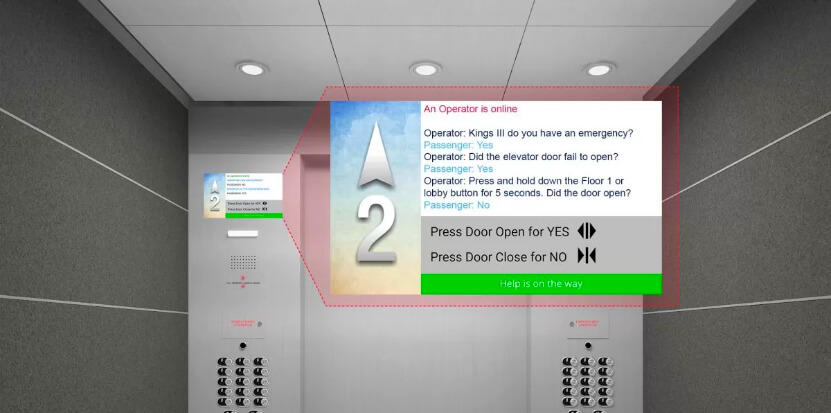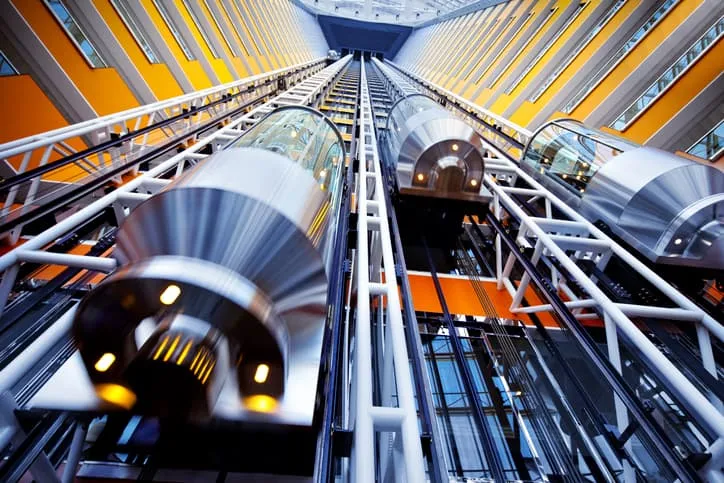- A17.1 Elevator Code 2013
- A17 1 Elevator Code 2016
- A17.1 Elevator Code
- Ansi A17 1 Elevator Code Free Download
Online Elevator Services
- Pay your Elevator Permit or Certificate Invoice Online
(Follow on-screen instructions. A minimal convenience fee is applied based on method of payment. You may cancel prior to payment authorization.)
ASME A17.1/CSA B44 Handbook ASME A17.1-2010, Safety Code for Elevators and Escalators CSA B44-10, Safety Code for Elevators Edward A. Donoghue, CPCA AN AMERICAN NATIONAL STANDARD Three Park Avenue. New York, NY. 10016 USA.
The Safety Code for Elevators and Escalators, 2019 (ASME A17.1, 2019) is a model code produced by the American Society of Mechanical Engineers (ASME). This document provides the foundation for many state and city codes. The ASME A17.1, 2019 combined with local jurisdiction amendments form the state codes. CODE: Elevator – ASME A17.1 - 2010 SECTION NO. 2.2.2.5 2.2.2.5 In elevators provided with Firefighters‘ Emergency Operation, a drain or sump pump shall be provided. The sump pump/drain shall have the capacity to remove a minimum of 11.4 m3/h (3,000 gal/h) per elevator hoistway. Graydon Ripley III Associate. (The B Code was basically a rewritten version of the ANSI A17.1 1937 Code) Effective April 11, 1975. Regulations 29-192 B88: Adopted the ANSI A17.1a-1971 and addendas 1972, 1973, 1974. Effective June 1, 1990. Regulations 29-192-C1: Adopted the ASME A17.1-1987, Safety Code for Elevators and Escalators and ANSI A17.1a-1988 addenda. ASME A17.1/2000 with supplements A17.1a –02 and A17.1b –03 Safety code for Elevators and Escalators as modified by NYC Building Code Appendix K; Chapter K1 ASME A17.1s –2005 Supplement to Safety Code for Elevator and Escalator for Machine Room Less (MRL) elevators as modified by Appendix K; Chapter K4.
The Division of Fire Safety, Elevator Safety Unit has adopted the following standard: American Society of Mechanical Engineers (ASME) A17.1. 2016.

 All new installations of elevator equipment and alterations must conform to the following national standards:
All new installations of elevator equipment and alterations must conform to the following national standards: - American Society of Mechanical Engineers Safety Code of Elevators and Escalators (ASME A17.1, 2016 Edition.)
- American National Safety Code for Personnel Hoist (ANSI A10.4, (2016 Edition)
- American National Standard Safety Code for Man lifts (ANSI A90.1, (2015 Edition)
- Safety Standard for Platform Lifts and Stairway Chair Lifts (A18.1, (2014 Edition)
- Inspectors Manual for Elevators and Escalators (ASME A17.2, (2014 Edition)
- American National Standards Institute for Transport Platforms (ANSI/SIA A92.10 2009
- American National Standards Institute Accessible and Usable Building and Facilities (ICC A117.1 2009)
With the adoption of A17.1-2016 testing of the following safety devices are required by the authority of Code of State Regulations 11 CSR 40-5.065 (G) (1) Maintenance, Repair and Alterations shall comply with ASME A17.1 sections 8.6.
- Section 8.6.5.16.4 A plunger gripper, where provided shall be examined and test per 8.10.3.2.5(n)
- Section 8.6.5.16.5 Over speed valves, where provided., shall be inspected and tested to verify that they will stop the car, traveling down with rated load, within the specified limits of 3.19.4.7 (a) using a written procedure supplied by the valve manufacturer or the person or firm maintaining the equipment. If the seal has been altered or broken, the over speed valve shall be resealed after successful test (Item 5.15.2)
- Rated load testing of overspeed valves will begin on January 1, 2021, and shall be required at intervals of 60 months.
Code Amendments
- American Society of Mechanical Engineers Safety Code of Elevators and Escalators (ASME A17.2.3, Section 2.12.2 Periodic)
- 2.12.2 Periodic Take appropriate safety precautions before opening the incline. (See Personnel Safety in the Foreword). Remove at least 6 to 8 steps of the escalator. Using a good light visually inspect the drip pans, undersides of steps, trusses, roller tracks, chains, handrails, and the interior of balustrades, skirts, and newels. Determine that they are present, in good working condition, clean of dirt and rubbish, and free of oil and combustibles. Visually inspect for any damage to the fire-resistive materials on the escalator enclosure. (See Item 2.1) Visually inspect the chains for lubrication and buildup of dirt and grease. If in the opinion of the Inspector, additional steps may need to be removed to perform a proper inspection.
The Division of Fire Safety, Elevator Safety Unit has adopted the following standard: American Society of Mechanical Engineers (ASME) A17.1 2004.
All new installations of elevator equipment and alterations must conform to the following national standards:
- American Society of Mechanical Engineers Safety Code of Elevators and Escalators (ASME A17.1, 2004 Edition with 2005 Addendum and 2005 Supplement with Amendments.)
- American National Safety Code for Personnel Hoist (ANSI A10.4, 2004 Edition)
- American National Standard Safety Code for Man lifts (ANSI A90.1, 2003 Edition)
- Safety Standard for Platform Lifts and Stairway Chair Lifts (A18.1, 2005 Edition)
- Inspectors Manual for Elevators and Escalators (ASME A17.2, 2004 Edition)
Code Amendments
- American Society of Mechanical Engineers Safety Code of Elevators and Escalators (ASME A17.2.3, Section 2.12.2 Periodic)
- 2.12.2 Periodic Take appropriate safety precautions before opening the incline. (See Personnel Safety in the Foreword). Remove at least 6 to 8 steps of the escalator. Using a good light visually inspect the drip pans, undersides of steps, trusses, roller tracks, chains, handrails, and the interior of balustrades, skirts, and newels. Determine that they are present, in good working condition, clean of dirt and rubbish, and free of oil and combustibles. Visually inspect for any damage to the fire-resistive materials on the escalator enclosure. (See Item 2.1) Visually inspect the chains for lubrication and buildup of dirt and grease. If in the opinion of the Inspector, additional steps may need to be removed to perform a proper inspection.
The Elevator Safety Act does not preclude municipalities or local governmental entities, which have an existing local ordinance or law, which meets or exceeds state requirements. However, a state operating certificate is still required and will be issued upon receipt of an approved inspection by an approved local entity.
To obtain a copy of the statute and promulgated rules and regulations please contact the Division at 573-751-2930.
Currently, the Elevator Safety Unit consists of a Deputy Chief, three State Inspectors, a Senior Office Support Assistant and an Office Support Assistant.
A17.1 Elevator Code 2013
Fee Schedule for inspections conducted by a State employed inspector with the Division of Fire Safety is as follows:

- Annual Inspection: $125 per unit, PLUS expenses
- State Operating Certificate fee: $25 per unit
Upon receipt of an approved safety inspection and test data, if applicable, the division will issue a state-operating certificate for the respective equipment. No elevator or related equipment shall operate in Missouri without a state operating certificate. Violation of this section may result in misdemeanor criminal charges.
Code Amendments

- American Society of Mechanical Engineers Safety Code of Elevators and Escalators (ASME A17.2, 2004 Item .8.12.2 Periodic)
- . 812.2 Periodic Take appropriate safety precautions before opening the incline. (See Personnel Safety in the Foreword). Remove at least 6 to 8 steps of the escalator. Using a good light visually inspect the drip pans, undersides of steps, trusses, roller tracks, chains, handrails, and the interior of balustrades, skirts, and newels. Determine that they are present, in good working condition, clean of dirt and rubbish, and free of oil and combustibles. Visually inspect for any damage to the fire-resistive materials on the escalator enclosure. (See Item . 8.1) Visually inspect the chains for lubrication and buildup of dirt and grease. If in the opinion of the Inspector, additional steps may need to be removed to perform a proper inspection.
The Elevator Safety Act does not preclude, (Political Subdivisions) which local ordinance or law, which meets state (statute) requirements (per Sections 701. (357) (359) (367) RSMo ), However a state operating certificate is still required and will be issued upon receipt of an approved inspection by an approved local entity.
A17 1 Elevator Code 2016

To obtain a copy of the statute and promulgated rules and regulations please contact the Division at 573-751-2930. 5971
Currently, the Elevator Safety Unit consists of a Deputy Chief, three State Inspectors, a Senior Office Support Assistant and an Office Support Assistant.
Fee Schedule for inspections conducted by a State employed inspector with the Division of Fire Safety is as follows:
A17.1 Elevator Code
- Annual Inspection: $125 per unit, PLUS expenses
- State Operating Certificate fee: $25 per unit
New Installations & Alterations
The Elevator Safety Act also requires the Missouri Division of Fire Safety to issue an installation or alteration permit upon review and approval of plans for new installations or alterations. Please mail all new installation and alteration plans to the Division of Fire Safety, Elevator Safety Unit, and P.O. Box 844, Jefferson City, MO 65102.
There are exceptions to the plan review process for units located in municipalities that contract with St. Louis County and for all units located in Kansas City. However, while the city of Kansas City does not require the inspection of dumbwaiters, state law requires an annual safety inspection of this equipment type be conducted by a state licensed elevator inspector.Existing Installations
Within a political subdivision or municipality that had adopted an edition of the A17.1, A17.2, A90.1 or A10.4 codes prior to August 1994, the annual inspection and witnessing of applicable tests shall be performed by local officials according to the code adopted when the equipment was installed. In areas with no elevator equipment code in effect prior to August 1994, the Missouri minimum standard set forth in 11 CSR 40-5.065 will be applied to all existing elevators and applicable equipment installed prior to July 1, 1999.
Documents / Forms
- License type and fee
- Initial Elevator Mechanic I or II and renewal, a fee of $75 for a two (2) year license; and
- Initial Elevator Contractor I or II and renewal, a fee of $200 for a two (2) year license; and
- All fees shall be payable to the Elevator Safety Fund - Missouri Division of Fire Safety and are non-refundable or nontransferable except for overpayments resulting from mistakes of law or fact.